Locating ancestral homes in ethnic neighborhoods can be a challenge, especially in older cities where progress has not always meant preservation.
For my own family home tour in the Los Angeles suburbs, we faced changing neighborhoods and shifting memories, but sometimes, new highways and developments can relocate an entire community.
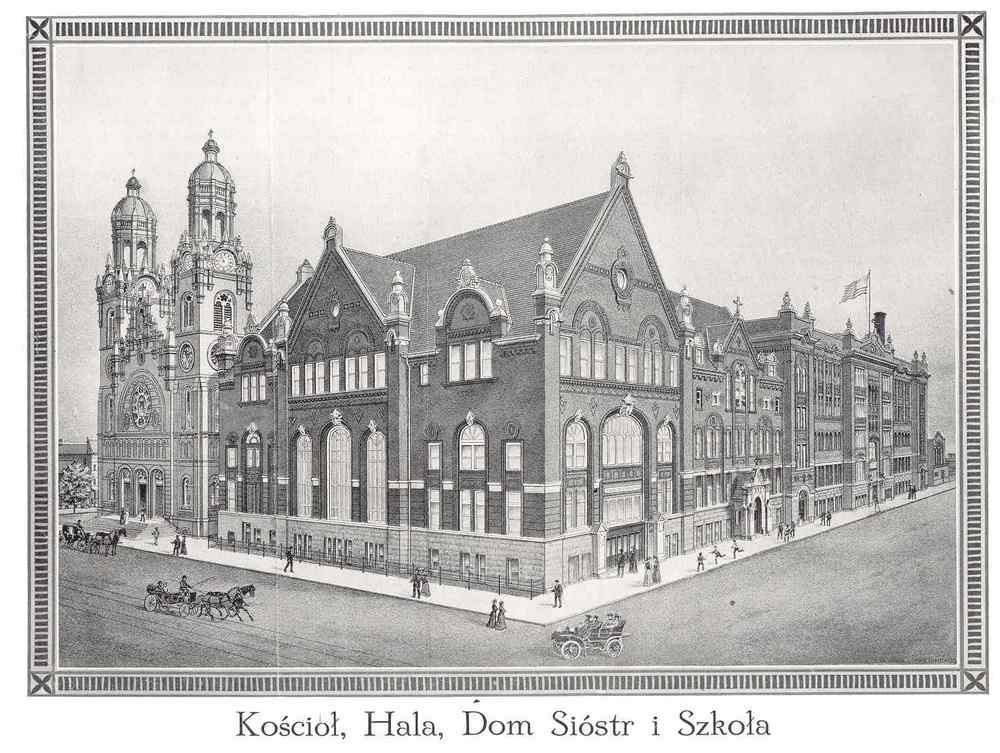
St. Stanislaus, ca. 1917
Rosalie Lindberg, Past-President of the Polish Genealogical Society of America, recently wrote to share her story of growing up in Chicago’s Polish Downtown neighborhood and attending St. Stanislaus Kostka Catholic Church. Although Chicago is a long way from Southern California, researchers everywhere face some of the same difficulties in locating family homes.
Rosalie writes:
I’ve been doing genealogical research for over 22 years (mostly Polish & Swedish) and that included visiting “ancestral homes” although they were all in Chicago. I did a lot of research on my Dad’s parent’s house because almost all of his siblings lived there in one of the apartments at one time or other until it was destroyed to make room for the expressway. The article I wrote is currently on line on the Polish Museum of America website.
Like the family you mentioned, my Mom’s parents lived (rented) in a number of places in the same neighborhood and it was fun trying to develop the time line for those locations and track them down. For the most part though, those visits were made primarily with my Mom and we had some interesting adventures in the process. I was able to photograph most of the locations including the “empty lot” that at one time held the building where my Mom was born.
Rosalie recorded her story in a family history, and portions have been reprinted in a neighborhood history project at the Polish Museum of America website. Not only does Rosalie include names, dates, and addresses for residents, she adds new and old photos, and house floorplans that enrich the story:
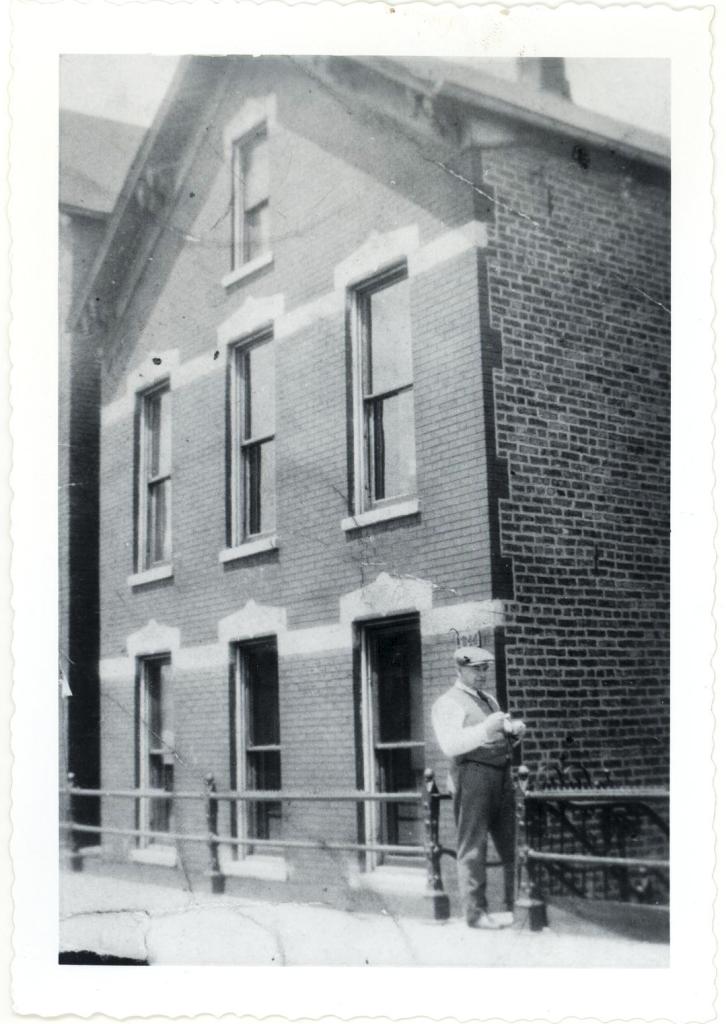
THEN–
1344 LeMoyne ca. 1935; W. Anthony Jankowski
an excerpt from
The House on LeMoyne, aka Blanche, by Rosalie Lindberg
For most people in Chicago, LeMoyne is a street that was once named Blanche. In 1923, Anthony Jankowski and his wife, Martha (Netzel) purchased the property at 1344 Blanche. In 1932, courtesy of the city of Chicago, the house on Blanche became the house on LeMoyne. For the Jankowski family, LeMoyne was not only the pie shaped lot at 1344 with a main house and small cottage, but also the hub of activity and place of many memories. When anyone in the family talked about “LeMoyne”, we understood the reference.
In 1890 both Anthony Jankowski and Martha Netzel had been born in Chicago’s Polish Downtown neighborhood only a few blocks from each other. They attended St. Stanislaus Kostka School and sang in the Junior Choir together. Much to the chagrin of Martha’s mother, who had her eye on a certain good-looking doctor for her daughter, Martha and Anthony were wed at St. Stanislaus on June 25, 1912
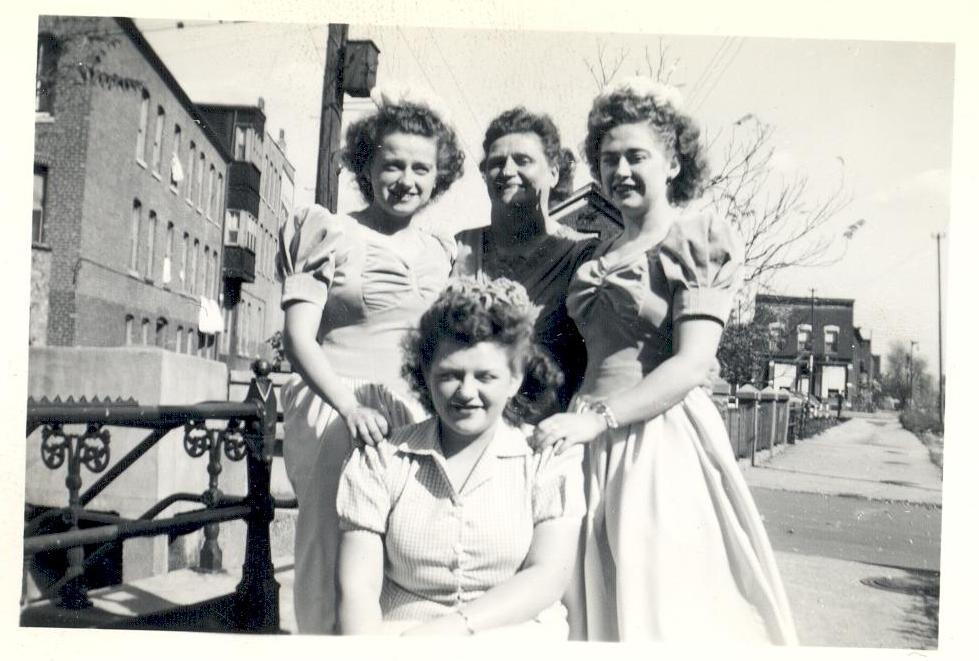
Rosalie’s aunts, ca. 1940’s
The property consisted of two houses on a somewhat pie shaped lot about 40 feet in width at the front and 25 feet across the back. The main house was sturdy with a red brick front that faced LeMoyne/Blanche and common brick on its sides. A tiny frame cottage squeezed onto the property between the brick house and the back property line and faced the alley on the east. It was the alley, which followed the angle of Elston avenue about 250 feet to the east, that fronted the triangular side of the property, that provided its interesting shape. Sometime after the house was built in 1881 the sidewalks were “raised” to accommodate sewers, and so like many homes of its era, it was necessary to go down the stairs into the side yard to reach the entry on the “first” floor. . .
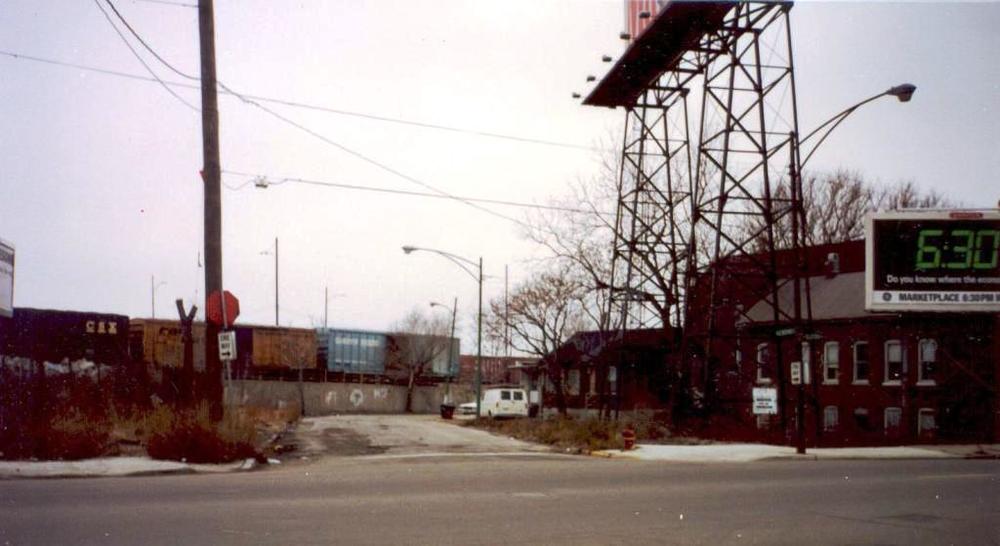
and NOW
1300 block of LeMoyne, looking West from Elston
. . . In the last few years, photos of LeMoyne just before its demolition came to light. It was heartbreaking to see the house that had held so much love for so many years sitting with its windows full of gaping holes looking like someone terrified of the destruction that was about to take place. It wasn’t just a building, it was our protector, our friend . . .and we couldn’t do anything to save it.
Today, the place where LeMoyne once stood is at the very edge of a narrow street sometimes used as a cutoff from North Avenue to Elston. To the south are walls of gray stone and above it the trains still come rumbling by. The only remnant of what was “our” neighborhood is a narrow corridor of homes on Elston Avenue. Although gentrification has come to the area, this little island of homes remains untouched and a sad reminder of what once had been.
— reprinted with permission.
Read the complete article and view Rosalie’s Photo Gallery here
at the Polish Museum of America website.
Rosalie’s tips for house history researchers are posted at the new Family Curator Discussion Forum. If you have tips or ancestral home stories to share, please add your comments here or to the new Forum.
Many thanks to Rosalie for generously sharing her story and photos. Her thoughtfully written history is a wonderful model of a home and neighborhood history. I know she’s given me new ideas for my own home history project.
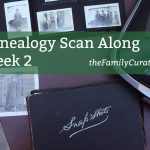





Obviously, we love this, Denise – and the forum is a great idea!